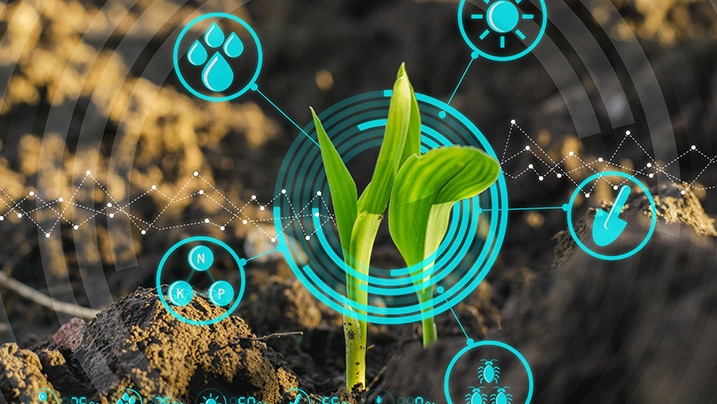CKYC Registry
-
Customer Service Contact us Service request Locate a branch
Find all the help you need
Scan the QR, get our app, and find help on your fingertips

Help CenterSupport topics, Contact us, FAQs and more
-
Login
Are you ready for an upgrade?
Login to the new experience with best features and services
-
Login
Are you ready for an upgrade?
Login to the new experience with best features and services
- Accounts
-
Deposits
IDFC FIRST Bank Deposits
View all Deposits -
Loans
IDFC FIRST Bank Loans
View all Loans - Wealth & Insure
-
Payments
IDFC FIRST Bank Payments
View all Payments -
Cards
IDFC FIRST Bank Cards
View all Cards - Blogs
- Corporate Account
-
Cash Management Services
IDFC FIRST Bank Cash Management Services
View all Cash Management Services - Supply Chain Finance
-
Corporate Lending
IDFC FIRST Bank Lending
View all -
Treasury
IDFC FIRST Bank Treasury
See more details - NBFC Financing
Support topics, Contact us, FAQs and more
- IDFC FIRST Bank Accounts
-
Savings Account
-
Corporate Salary
Account -
Senior Citizens
Savings Account -
First Power
Account -
Current Account
-
NRI Savings
Account -
TASC Institutional
Account -
Savings Account
Interest Calculator
- IDFC FIRST Bank Deposits
-
Fixed Deposit
-
Recurring Deposit
-
NRI Fixed Deposit
-
Safe Deposit Locker
-
FD Calculator
-
RD Calculator
- IDFC FIRST Bank Loans
-
Personal Loan
-
Consumer Durable
Loan -
Home Loan
-
Business Loan
-
Professional Loan
-
Education Loan
-
New Car Loan
-
Pre-owned Car Loan
-
Two Wheeler Loan
-
Pre-owned Two
Wheeler Loan -
Commercial Vehicle
Loan -
Gold Loan
-
Loan Against Property
-
Loan Against Securities
-
Easy Buy EMI card
-
Personal Loan
EMI Calculator -
Education Loan
EMI Calculator -
Home Loan
EMI Calculator
- IDFC FIRST Bank Wealth & Insure
-
FIRST Select
-
FIRST Wealth
-
FIRST Private
-
Mutual Funds
-
Sovereign Gold Bond
-
Demat Account
-
Term Insurance
-
Life Insurance
-
Health Insurance
-
General Insurance
-
Bonds
-
Loan Against
Securities -
Portfolio Management
Service
- IDFC FIRST Bank Payments
-
FASTag
-
Credit Card
Bill Payments -
UPI
-
Funds Transfer
-
Forex Services
-
Pay Loan EMI
- IDFC FIRST Bank Cards
-
Ashva :
Metal Credit Card -
Mayura :
Metal Credit Card -
FIRST Millennia
Credit Card -
FIRST Classic
Credit Card -
FIRST Select
Credit Card -
FIRST Wealth
Credit Card -
FIRST WOW!
Credit Card -
Deals
-
Debit Cards
-
Co-branded Cards
-
Credit Card
EMI Calculator -
FIRST Corporate
Credit Card -
FIRST Purchase
Credit Card -
FIRST Business
Credit Card
- Premium Metal Credit Cards
-
AshvaLifestyle1% Forex₹2,999
-
MayuraLifestyleZero Forex₹5,999
-
FIRST PrivateInvite Only
- Best for travellers
-
MayuraZero ForexMetal₹5,999
-
Ashva1% ForexMetal₹2,999
-
FIRST WOW!Zero ForexTravelLifetime Free
-
FIRST SWYPTravel OffersEMI₹499
-
FIRST Select1.99% ForexLifestyleLifetime Free
-
FIRST Wealth1.5% ForexLifestyleLifetime Free
-
Club VistaraTravelLifestyle₹4,999
-
IndiGo IDFC FIRST Dual Credit CardTravelLifestyle₹4,999
- Max benefits, Free for life
-
FIRST Classic10X RewardsShoppingNever Expiring Rewards
-
FIRST Millennia10X RewardsShoppingNever Expiring Rewards
-
FIRST Select10X RewardsLifestyle1.99% Forex
-
FIRST Wealth10X RewardsLifestyle1.5% Forex
-
FIRST WOW!RewardsTravelZero Forex
-
LIC ClassicRewardsInsuranceShopping
-
LIC SelectRewardsInsuranceShopping
- Reward Multipliers
-
AshvaLifestyleMetal₹2,999
-
MayuraLifestyleZero Forex₹5,999
-
FIRST ClassicNever Expiring RewardsShoppingLifetime Free
-
FIRST MillenniaNever Expiring RewardsShoppingLifetime Free
-
FIRST SelectNever Expiring RewardsLifestyleLifetime Free
-
FIRST WealthNever Expiring RewardsLifestyleLifetime Free
- Rewards & Credit on UPI
-
FIRST Power+FuelUPI₹499
-
FIRST PowerFuelUPI₹199
-
FIRST EA₹NVirtual1% Cashback₹499
-
FIRST DigitalVirtualUPI₹199
-
IndiGo IDFC FIRST Dual Credit CardUPITravelDual cards
- Fuel and Savings
-
FIRST PowerRewardsUPI₹199
-
FIRST Power+RewardsUPI₹499
-
LIC ClassicRewardsInsuranceShopping
-
LIC SelectRewardsInsuranceShopping
- Express and Flaunt
-
AshvaMetal1% Forex₹2,999
-
MayuraMetalZero Forex₹5,999
-
FIRST SWYPEMIOfferMAX₹499
-
FIRST MillenniaRewardsShoppingLifetime Free
- FD Backed rewarding Credit Cards for all
-
FIRST EA₹NVirtualCashback₹499
-
FIRST WOW!Zero ForexTravelLifetime Free
-
CreditPro Balance TransferTransfer & SaveReduce InterestPay Smartly
- IDFC FIRST Bank NRI Forex Solutions
-
Send money to India-Wire transfer
-
Send money to India-Digitally
-
Send money abroad
-
Max Returns FD (INR)
- IDFC FIRST Bank MSME Accounts
-
Platinum Current
Account -
Gold
Current Account -
Silver Plus
Current Account -
Merchant Multiplier
Account -
Agri Multiplier
Account -
TASC Institutional
Account -
Dynamic Current
Account -
World business
Account -
First Startup
Current Account
- IDFC FIRST Bank Business Loans
-
Business Loan
-
Professional Loan
-
Loan Against Property
-
Business Loan for Women
-
Working Capital Loan
-
Construction Equipment Loan
-
Machinery Loan
-
Healthcare Equipment Loan
- IDFC FIRST Bank Business Solutions
-
Payment Solutions
-
Tax Payments
-
Doorstep Banking
-
Point of Sale (POS)
-
Escrow Accounts
-
NACH
-
Payment Gateway
-
UPI
-
Virtual Accounts
-
As per amendment in the Income Tax Rules, PAN or Aadhaar are to be mandatorily quoted for cash deposit or withdrawal aggregating to Rupees twenty lakhs or more in a FY. Please update your PAN or Aadhaar. Kindly reach out to the Bank’s contact center on 1800 10 888 or visit the nearest IDFC FIRST Bank branch for further queries.
-
-
Most Searched
Sorry!
We couldn’t find ‘’ in our website
Here is what you can do :
- Try checking the spelling and search
- Search from below suggestions instead
- Widen your search & try a more generic keyword
Suggested
Get a Credit Card
Enjoy Zero Charges on All Commonly Used Savings Account Services
Open Account Now
Agriculture sparked the beginning of civilisation. Our evolution as humans was only possible once we learnt how to grow and treat our own food. Today, digitisation has entered into every sphere of our activity, and the time has come to further propel our growth through digitising agricultural practices.
Technology has been responsible for the growth of farm productivity in both quantity and quality. Whether it be sensors, robot swarms or software to monitor and compile data, technology is the only guarantee agriculture has in a world with an increasing population and decreasing farmland.
In the wake of the COVID-19 pandemic, digitisation is the next logical step for agricultural businesses in India. The smart agriculture market stood at USD 13.2 Billion in 2019, and research suggests it is expected to reach USD 22 Billion by 2025. In fact, its importance to the agricultural sector is such that Niti Aayog has stressed that it will be impossible to maintain a 4% growth within the industry without digitising agriculture. So what's driving digitisation in the agricultural space, and why is this the right time to do so?
READ MORE
Factors Driving Agricultural Digitisation
1. Proper internet connectivity
This is a prerequisite for digitising processes in agriculture. Fortunately, India is on a fast track to achieving complete internet coverage, with mobile data becoming cheaper and broadband penetration growing at 35% pan-India for the last three years. This penetration rate is poised to grow even larger because of the increase in demand.
2. Rural electrification
Self-sustaining solar panels, wind turbines and small dams are now being constructed to provide villages with safe, sustainable and free electricity. Even though there is still a long way to go for complete rural electrification, the efforts will only support agricultural digitisation.
3. Impetus to go digital
The biggest hurdle for farmers who wish to digitise has been its high cost. Most Indian farm holdings are a mere 1.2 hectares. As much as smart farming can be implemented on American farms (180 hectares), it would be decidedly cost-prohibitive in India….or so it used to be. This challenge has been completely circumvented through numerous government initiatives. With programs such as a 2000 crore grant to digitise the Primary Agricultural Credit Society [PACS], initiation of the Management of Agricultural Extension in Hyderabad [MANAGE], the Pradhan Mantri Krishi Sinchayee Yojana, and the mentoring of numerous AgriTech startups, the central government of India is monumentally supporting smart farming.
4. New Technology
With an explosion in technology, it is now possible to track the health of individual grains of crops, process weather information on an hourly basis, and even track the soil's fertility. By using such data-driven technology and automation, farmers can increase their average yield effortlessly. As technology gets more affordable, it finds more consumers as well as more applications. This is especially true in hydroponics, sensors, and automation markets. Moreover, technology assisting in decision-making, such as which crops will complement one another and how much watering is required based on weather predictions, is now a reality. Companies such as Fasal, Tata Krishi Kendra and Trimble are actively involved in digitising India's rural landscape.
Benefits of digitising agriculture
1. Improving soil quality
Furthermore, the heavy use of insecticides, pesticides, and fertilisers is rapidly degrading soil quality, which poses a challenge to better agricultural practices. It affects crop yield as well as crop quality. Digitising agrarian practices is one potential solution for soil recovery (within as few as three crop cycles) as it provides the avenue for careful crop selection and management of crop growth and allied factors.
2. Sustainable Farming
Big data analytics ensures that we can now analyse and monitor vast amounts of data to understand the natural relationship between crops, livestock, weather and soil. This results in the implementation of various sustainable practices that increase farm yield and decrease the use of pesticides and insecticides. It fosters a synergetic partnership between crops and livestock and even pisciculture.
3. Dynamic Marketplace
Digitisation ensures that farmers, both big and small, can now sell their goods for a fair price across the country and even worldwide. Moreover, agriculturalists can now predict the value of their crops and juxtapose it with the crop demand. This ensures effective monetisation of crop yield and the fulfilment of global agricultural demand. With potential rapid digitisation, the Indian agricultural landscape is just waiting to boom!
The biggest challenges to agricultural digitisation are said to be education and expense, but these can be overcome. With ample support from the government, NGOs and various agri-startups, the time is suitable for the Indian agricultural community to digitise. The average yield of rice in India is 3.85 tonnes/hectare (highest yield of rice is 9.82 tonnes/hectare- Australia) while the average yield of wheat is 2.8 tonnes/hectare (highest yield of wheat is 8.9 tonnes/hectare- Netherlands). The use of digitisation can completely alter these figures.
Digitisation is a promising way forward, and it is time that India's agricultural economy adopted it and realised its benefits.
Disclaimer
The contents of this article/infographic/picture/video are meant solely for information purposes. The contents are generic in nature and for informational purposes only. It is not a substitute for specific advice in your own circumstances. The information is subject to updation, completion, revision, verification and amendment and the same may change materially. The information is not intended for distribution or use by any person in any jurisdiction where such distribution or use would be contrary to law or regulation or would subject IDFC FIRST Bank or its affiliates to any licensing or registration requirements. IDFC FIRST Bank shall not be responsible for any direct/indirect loss or liability incurred by the reader for taking any financial decisions based on the contents and information mentioned. Please consult your financial advisor before making any financial decision.
The features, benefits and offers mentioned in the article are applicable as on the day of publication of this blog and is subject to change without notice. The contents herein are also subject to other product specific terms and conditions and any third party terms and conditions, as applicable. Please refer our website www.idfcfirstbank.com for latest updates.























